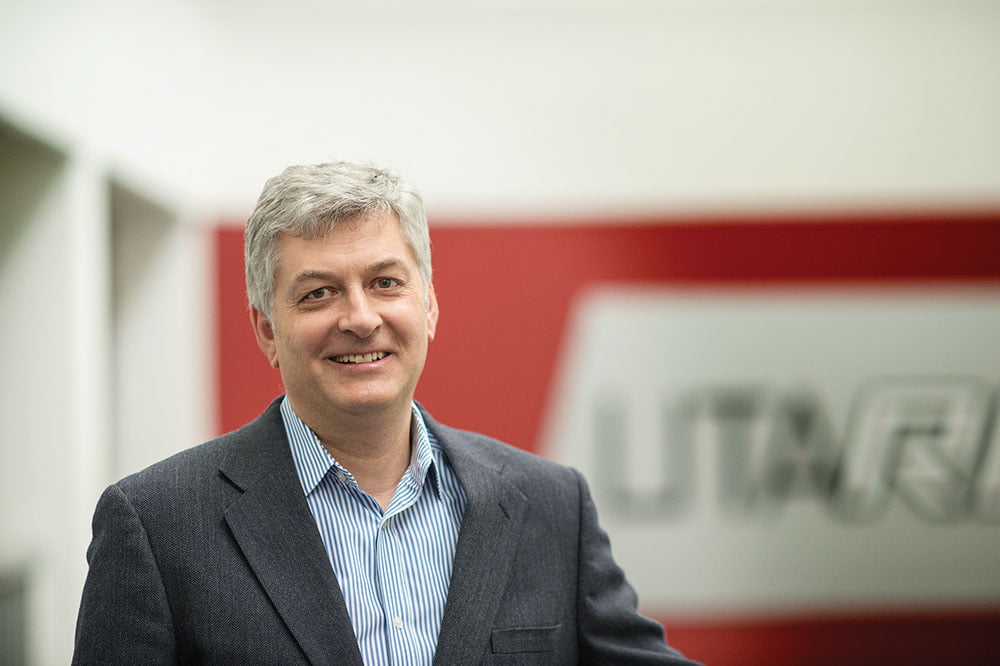Improved testing of composite materials

A team of University of Texas at Arlington researchers is working to develop better modeling methods for affordable, sustainable testing of composite materials.
Endel Iarve, professor of mechanical and aerospace engineering, has received a $2.3 million grant funded by the Air Force Research Lab to continue a collaborative project with colleagues at Wichita State University
Iarve is principal investigator on the project, which includes UTA aerospace engineering Professors Andrew Makeev and Kenneth Reifsnider and Assistant Professor Rassel Raihan as co-principal investigators.
Together, they are creating new tools for the design and certification of various advanced composite structures and materials—including laminated and woven composites—with an emphasis on realistic representation of “as-manufactured” parts that include manufacturing defects. The goal is to bring these tools into the certification framework to reduce costs and increase efficiency across the industry.
“The award is a significant investment by the Air Force Research Lab and enables the continuation of the tremendous work being done by Professor Iarve and his colleagues in an area of critical importance to the use of advanced composite materials,” UTA President Vistasp Karbhari said. “This research will undoubtedly advance the state-of-the-art and have a profound effect on the safety of aircraft and the effective assessment of service life and flight envelopes both for military and civil aviation.”
There are three components to UTA’s research:
-
Iarve, who is also part of the Institute for Performance Prediction Methodology (IPPM) at the UTA Research Institute, will use a discrete damage modeling technique that he developed through previous Department of Defense and NASA research grants to enhance advanced simulation techniques for high-fidelity strength and life prediction of composite structures. Discrete damage modeling simulates matrix cracking at initially unknown locations and directions within a composite structure. These simulations can allow for better understanding and reduction of the amount of testing required.
-
Reifsnider, who directs the IPPM, and Raihan, who also works at UTARI, will investigate how to predict quality and strength of bonded joints from material state data, measured non-invasively. Aerospace, marine and automotive manufacturers use composite materials in structures to reduce weight and increase performance, but still face challenges in understanding how best to bond different materials to make reliable structures and predict their strength and performance.
“Bonded joints in composites are a key enabler for creating efficient unitized structure, but can also be an Achilles heel,” Iarve said. “One of the goals of the project is to devise a way to determine the quality of a bond without breaking it through novel experimental techniques.”
-
Makeev, who runs UTA’s Advanced Materials and Structures Lab, will work on high-resolution, non-destructive characterization of composite joints and repairs. Aircraft composite structures typically feature joints with tight radii and complex 3D structures, which are uninspectable using traditional non-destructive methods.
Makeev will apply high-resolution computing tomography inspection technology to overcome object size limits and allow automation for critical joint regions and bonded repairs in larger structures, focusing on detection of disbonds, voids and foreign objects/materials.
“It is important for the aerospace industry, as well as numerous other industries where composites are used in manufacturing, to have tools that make testing and inspections as reliable and cost-effective as possible,” said Erian Armanios, chair of UTA’s Mechanical and Aerospace Engineering Department. “This grant is a testament to the excellent research being performed by Drs. Iarve, Reifsnider, Raihan and Makeev, and shows the value of our ability to bring together similar research areas across the department to produce results that will lead to greater confidence in composite testing and certification.”
– Written by Jeremy Agor